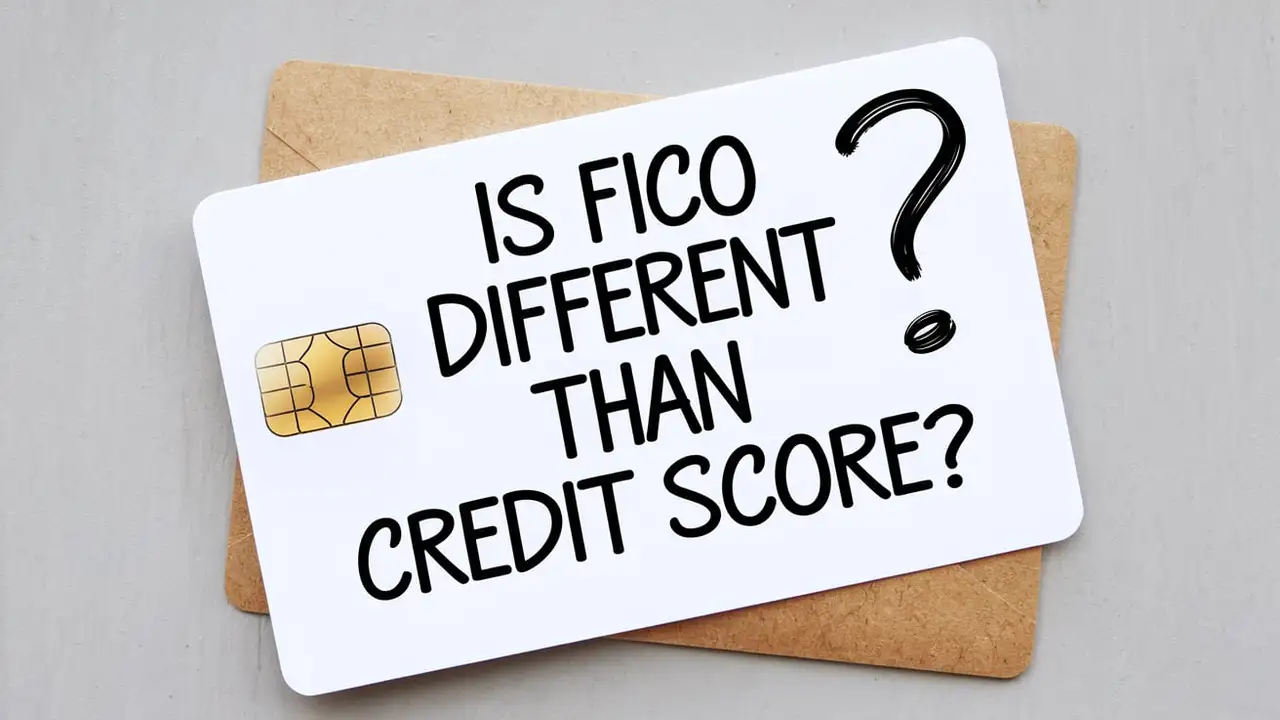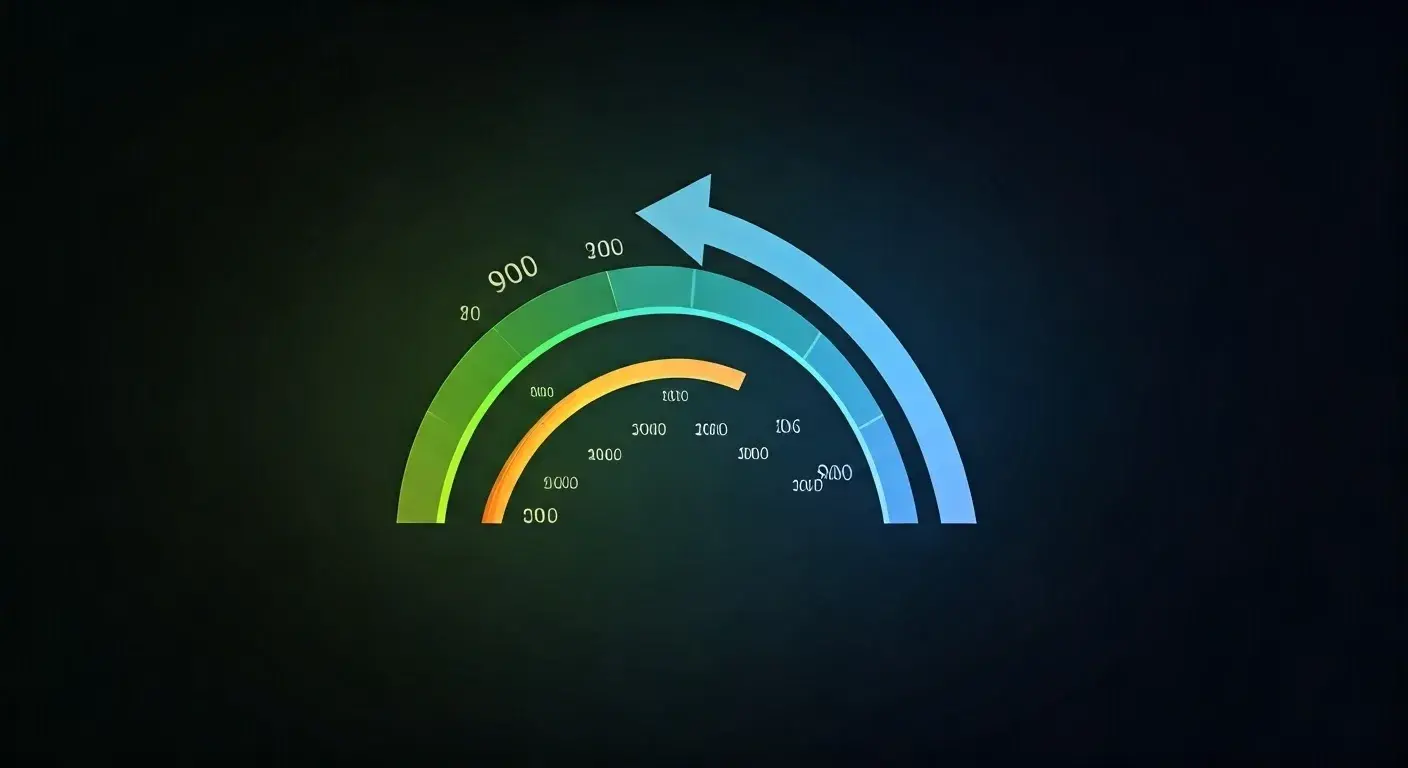Understanding your credit score is crucial for navigating the financial world. Whether you're applying for a loan, renting an apartment, or even getting insurance, your credit score plays a significant role. However, the terms "FICO score" and "credit score" are often used interchangeably, leading to confusion. So, is FICO different than a credit score? The short answer is that FICO score is *a type* of credit score, but not all credit scores are FICO scores. Let's delve into the details to clarify the difference and why it matters.
The Fundamentals of Credit Scores
A credit score is a three-digit number that summarizes your creditworthiness. It's a statistical analysis of your credit history, predicting the likelihood that you'll repay your debts on time. Credit scores are used by lenders, creditors, and other businesses to assess risk when offering you credit. A higher score generally indicates lower risk, making you a more attractive borrower and potentially qualifying you for better interest rates and terms.
Credit Reporting Agencies: The Foundation of Credit Scores
Credit scores are based on information reported to credit bureaus. The three major credit bureaus in the United States are:
- Equifax
- Experian
- TransUnion
These bureaus collect data from various sources, including banks, credit card companies, lenders, and collection agencies. This data includes your payment history, outstanding debt, credit utilization, length of credit history, and types of credit accounts.
What Makes Up a Credit Score?
While the specific weighting varies depending on the scoring model, generally, the following factors contribute to your credit score:
- Payment History (35%): This is the most important factor. Paying your bills on time is crucial for maintaining a good credit score. Late payments, collections, and bankruptcies can significantly damage your score.
- Amounts Owed (30%): Also known as credit utilization, this refers to the amount of debt you owe compared to your available credit. Keeping your credit utilization low (ideally below 30%) is essential.
- Length of Credit History (15%): A longer credit history generally indicates a more stable credit profile.
- Credit Mix (10%): Having a variety of credit accounts (e.g., credit cards, installment loans, mortgage) can positively impact your score.
- New Credit (10%): Opening too many new credit accounts in a short period can lower your score, as it may indicate higher risk.
FICO: A Widely Used Credit Scoring Model
FICO (Fair Isaac Corporation) is a data analytics company that developed the most widely used credit scoring model in the United States. Most lenders rely on FICO scores to make lending decisions. Therefore, when people talk about "your credit score," they're often implicitly referring to your FICO score.
Understanding FICO Scoring Models
FICO offers multiple scoring models, which are regularly updated to reflect changes in consumer behavior and lending practices. Some common FICO scoring models include:
- FICO Score 8: This is the most widely used FICO score by lenders today.
- FICO Score 9: A more recent model that places less weight on medical debt and includes rental payment data (when reported).
- Industry-Specific FICO Scores: These scores are tailored for specific industries, such as auto lending (FICO Auto Score) and mortgage lending (FICO Mortgage Score).
- Older FICO Models: Some lenders still use older versions of FICO scores.
Each version uses a slightly different algorithm, so your FICO score can vary depending on the model used. It's also important to note that your FICO score can vary slightly between the three major credit bureaus because the information they hold about you may not be identical.
The FICO Score Range
FICO scores range from 300 to 850. Generally, scores are categorized as follows:
- 300-579: Poor
- 580-669: Fair
- 670-739: Good
- 740-799: Very Good
- 800-850: Exceptional
A higher FICO score indicates a lower credit risk, making you a more attractive borrower.
VantageScore: A Competitor to FICO
VantageScore is another credit scoring model developed jointly by the three major credit bureaus (Equifax, Experian, and TransUnion). It's designed to be an alternative to FICO and uses a slightly different scoring algorithm.
Key Differences Between FICO and VantageScore
While both FICO and VantageScore aim to predict creditworthiness, there are some key differences between the two models:
- Scoring Range: Although both models provide a score, the scale differed until VantageScore 3.0. Versions prior ranged from 501-990. Now they align with FICO, both running from 300 to 850.
- Minimum Credit History: FICO typically requires a minimum of six months of credit history to generate a score. VantageScore can generate a score with as little as one month of credit history.
- Weighting of Factors: The weight given to different credit factors can vary between the two models.
- Adoption by Lenders: While VantageScore is becoming increasingly popular, FICO is still the dominant credit scoring model used by lenders.
Because of these differences, your VantageScore might differ from your FICO score. It's important to be aware of both scores, but remember that lenders primarily rely on FICO scores.
So, is FICO Just Another Credit Score?
Yes and no. FICO is a *type* of credit score, but not the *only* type. It's more accurate to say that FICO is a specific brand or model of credit score. Think of it like this: "Coke" is a brand of soda, but not all sodas are Coke. Similarly, "FICO" is a type of credit score, but not all credit scores are FICO scores. VantageScore, for example, is another model. The important thing to remember is that the factors used to calculate each score are generally consistent, though the models weight them differently.
Why It Matters: Understanding the Implications
Knowing the difference between FICO scores and other credit scores, such as VantageScore, can help you better understand your creditworthiness and manage your finances effectively.
Applying for Credit
When applying for credit, it's wise to know which credit scoring model the lender uses. Most lenders use FICO scores, so focusing on improving your FICO score is generally the best strategy. However, some lenders may use VantageScore or other proprietary scoring models.
Monitoring Your Credit
Regularly monitoring your credit reports and scores is crucial for identifying errors and detecting potential fraud. You can obtain free copies of your credit reports from each of the three major credit bureaus annually through AnnualCreditReport.com. Many credit card companies and financial institutions also offer free credit score monitoring services. Keep in mind that the score provided might be a VantageScore or a FICO score from a specific bureau. Understanding which model you are seeing will help you interpret the number.
Improving Your Credit Score
Regardless of whether you're focusing on FICO or another credit score, the key to improving your creditworthiness is to practice responsible credit habits. Here are some tips:
- Pay Your Bills On Time: This is the single most important factor. Set up automatic payments to avoid late fees.
- Keep Your Credit Utilization Low: Aim to keep your credit card balances below 30% of your credit limit.
- Don't Open Too Many New Accounts: Applying for too many credit cards in a short period can lower your score.
- Maintain a Good Credit Mix: Having a variety of credit accounts can be beneficial.
- Monitor Your Credit Reports: Check your credit reports regularly for errors and report any inaccuracies.
Understanding Your Credit Report
Your credit report is a detailed record of your credit history. It includes information about your payment history, outstanding debts, credit accounts, and any negative items such as late payments, collections, or bankruptcies. Reviewing your credit report regularly is essential for identifying errors and ensuring that the information is accurate. If you find any inaccuracies, dispute them with the credit bureau that issued the report. The credit bureau is then required to investigate the dispute and correct any errors.












